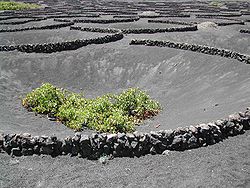http://memory.loc.gov/cgi-bin/query/r?ammem/consrvbib:@OR(@field(AUTHOR+@3(U+S++Congress+++44th+++2nd+Session++))+@field(OTHER+@3(U+S++Congress+++44th+++2nd+Session++)))
http://www.blm.gov/wo/st/en/prog/more/lands/desert_land_entries.html
http://www.blm.gov/pgdata/etc/medialib/blm/noc/business/eforms.Par.46135.File.dat/2520-001.pdf
I was unaware of this until this week, but apparently the homesteading act which was repealed by tricky dick nixon in way back when had a sort of ugly cousin called the desert land act. (links above)
anyway, apparently you can get up to 320 acres of land for 1.25 dollars an acre as long as special conditions pertain.
the land cannot have any claims on it
the land must have 0 useful mineral potential
the land must have 0 timber value
basically the land must be shitty desert wasteland. thats why its going for so cheap.
once such land is found, the person wanting the land has to get it surveyed out and give this along with a budget and some other documents and dirt samples to the local blm office. from what ive read there is a waiting list described as "large, or big" but also from what ive read, 60 percent of all desert land claims are in utah.
colorado new mexico, arizona, nevada, and idaho are also participating states, so i question the legitimate grandeur of such a waiting list.
because-
once all this has happened you must take it upon yourself to irrigate at least 1/8 of the total land you have claimed ( 40/320 acres ) within 4 years (there are cases where they will extend this). if you have only irrigated 20 acres of 320, it seems as though they can take away all land that has not yet been irrigated.
however, when done well, at the end of the 4 years, you get a patent for the land.
my question is then, if anyone could enlighten me on a few key issues.
from what i understand only utah and colorado have blanket bans on rainwater collection. this makes it sound as though arizona and new mexico have laws about rainwater harvesting, but few. from what ive studied, it seems as though since rainwater only contributes 3-15 percent of all ground water and surface water, its pretty much ok to harvest since it doesnt conflict much with the first come first serve water laws. is this a correct conclusion? im thinking of utilizing roof runoff into cisterns as well as creating water catching earthworks (they arent really holders, but they catch and hold water for a short amount of time).
im also wondering if anyone knows anything about the desert land act. what have you heard of it? is it one of those things where the government makes that you can have but really cant? a catch 22 of sorts?
also, if anyone is already doing something of this sort, it would be cool to pick your brain.
thanks for reading.




